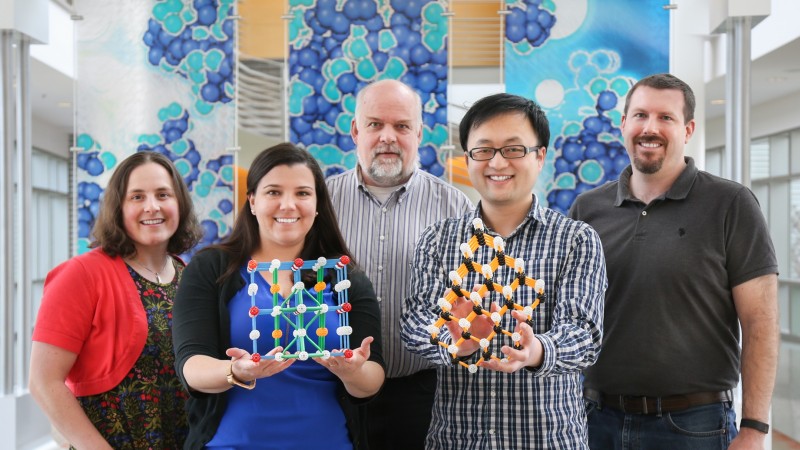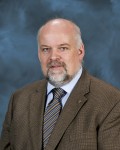Scientific poster sessions usually follow the same basic pattern: summarizing research on a four-foot-wide display, posing with the finished product, and discussing results with meeting attendees strolling by.
But poster sessions of the future could look very different, as demonstrated recently by Tedi-Marie Usher-Ditzian, a postdoctoral researcher from the US Department of Energy’s (DOE’s) Oak Ridge National Laboratory (ORNL). As one of the first interactive posters presented at the Electronic Materials and Applications 2017 (EMA2017) conference, her project serves as an advanced teaching tool that could eventually lead to more dynamic scientific conversations in classrooms, at conferences, and beyond.
Part of the ORNL Neutron Sciences Directorate (NScD), Usher-Ditzian works in the Advanced Diffraction Group at the Spallation Neutron Source (SNS). Her early career work has already earned her the College of Engineering Distinguished Dissertation Award at North Carolina State University’s inaugural College Graduate Student Awards. Earlier this year she was invited to participate in a poster session for EMA2017.
With help from her colleagues, Usher-Ditzian constructed a nontraditional, interactive poster that includes a 3-D crystal structure model and a virtual structure and data simulation viewer. This interactive tool, “Nanobuilder,” calculates results using the DISCUS simulation package, a free online program that produces atomic structures and provides relevant data.
“My poster shows some of our initial structural studies of nanocrystals,” she said. “We are looking at how the atoms are arranged relative to one another and how those arrangements influence material properties.”
EMA2017 attendees had the opportunity to examine the 3-D crystal model and learn about the structures of different materials through Nanobuilder, which demonstrates how factors such as shape and size can affect the usefulness of nanocrystals in various applications. This program allows users to input parameters and select material structures, shapes, and sizes, resulting in visual displays they can navigate to better understand the associated changes in virtual nanocrystals.
Usher-Ditzian’s coauthors include fellow postdoctoral associates Daniel Olds and Jue Liu and neutron scattering instrument scientist Katharine Page. The team is developing this educational resource in collaboration with NScD Neutron Data Analysis and Visualization Division Director Thomas Proffen.
The team’s ongoing work to extend methods and build better analytical software could also benefit other researchers interested in nanomaterials.
“Anyone studying local structure or the structure of materials may be interested in this modeling technique, especially those studying nanocrystals and quantum dots,” she said. Now, scientists can communicate with their peers through a medium that transcends static words on paper.
SNS is a DOE Office of Science User Facility. UT-Battelle manages ORNL for the DOE Office of Science. The Office of Science is the single largest supporter of basic research in the United States and is working to address some of the most pressing challenges of our time. For more information, please visit http://science.energy.gov/.—By Elizabeth Rosenthal




